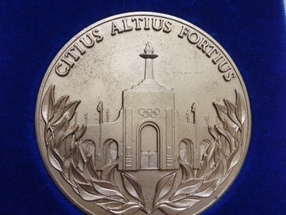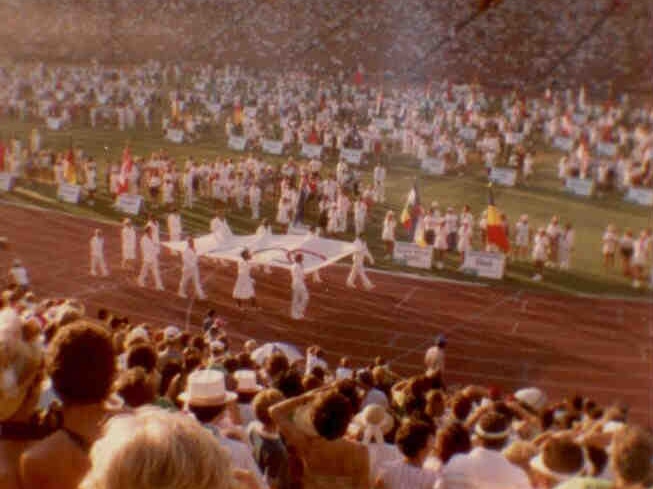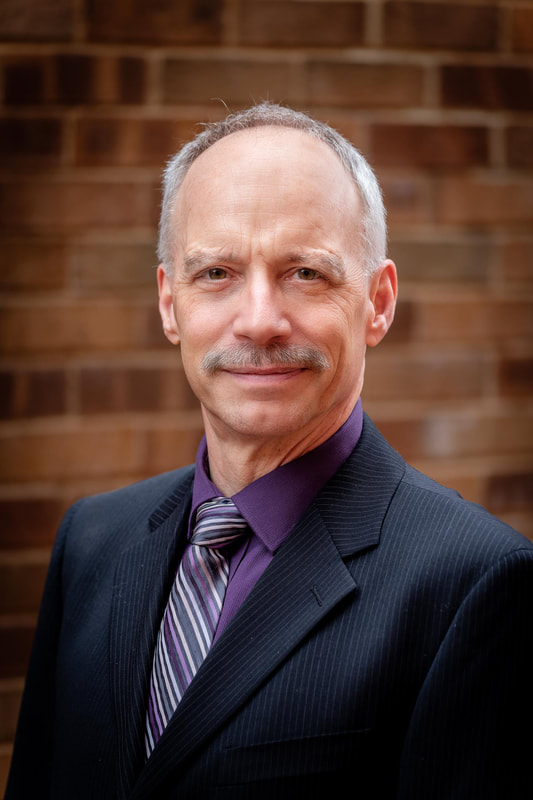 LAOOC commemorative medal for volunteers
LAOOC commemorative medal for volunteers It was also everyone else’s.
That’s how we landed our second choice, swimming. I didn’t know much about the sport, so I spent a little time catching up on the names before heading to LA. I wound up enjoying the swimming events immensely. Still, it was sad that I wouldn’t get to experience the LA Memorial Coliseum, where track and field events would be taking place. Dick and I managed to visit briefly, walking outside its locked confines. But it just wasn’t the same.
And then we were invited to the “faux-pening ceremonies.”
Okay, that’s my term. The actual descriptor was the dress rehearsal. Getting a seat in the Coliseum for the real deal required a major cash outlay, far beyond the bank accounts of two college grads. But as the official opening ceremonies were incredibly complex, a dry run was in order, and the LAOOC graciously invited its volunteers to play a role. Most of us, including Dick and I, were spectators, but a few got to walk the track and infield as pretend athletes.
I was thrilled to stroll through the confines of the Coliseum, rich with athletic history going back to 1923. This wasn’t its first Olympics—it was a venue during the 1932 Games. In fact, the cauldron over the main entrance held the Olympic flame in ’32 as well as ’84, the first time a single cauldron was used more than once. The stadium seemed vast given its age, though actually it seated fewer people in 1984 (93,000) than it did in earlier years (when it was closer to 100,000).
 The Olympic choir during rehearsal
The Olympic choir during rehearsal This Olympics would also be hailed as the first to turn to a person of African descent to light the Olympic flame. During the actual opening ceremonies, that honor fell to former Olympian Rafer Johnson, who dutifully jogged up the long, steep stairs to reach the gas-fueled tail of the Olympic rings that would whip the flame of his torch to the towering cauldron. For the rehearsal, the carrying of the official Olympic flag was done by a handful of former Olympians, including Bruce Jenner, John Naber and Billy Mills.
There was a gospel choir—the first ever at an Olympic event—and hundreds of participants on the infield launched an equal number of helium-filled balloons into the blue sky. These balloons trailed ribbons, each with the word “Welcome” in a language represented at the Games. During the actual event, some of these balloons fouled power lines and caused a brief outage. I heard a rumor, too, that one of the balloons released during the rehearsal was found in Florida days later.
There were fireworks at both the rehearsal and the actual ceremonies, and the latter would feature a man on a jetpack zipping over the Coliseum’s main entrance and landing on the infield.
Even though we didn’t attend the actual event, the “faux-pening ceremonies” were a treat. I felt like we’d gained a sneak peak at what the rest of the world would celebrate a few days later.
A few final thoughts as I wrap this series on my time at the 1984 Olympic Games:
- One of our fellow press operations volunteers at the swim venue was Herb Wildman, himself a former Olympian. He competed on the U.S. water polo teams in 1932—ironically, also in Los Angeles—and 1936 in Berlin. His team earned bronze in those first LA Games. Herb was a friendly and engaging man. I took the opportunity to interview him and, sometime later, wrote a story about his adventures. Sadly, I misplaced my clip of that article long ago. Herb passed away in 1989.
- The LAOOC was generous with its praise and appreciation of the 29,000 people who volunteered during the Games. One of the most cherished thank-yous we received were genuine bronze medals, the same size as Olympic hardware, in blue velvet-lined boxes. We also received signed certificates printed on card stock; I’ve kept mine in a frame and displayed it with my various awards received during my career.
- Before, during and after the Games, the thought that this was something special and historic was always in mind. The LAOOC create a directory of volunteers so we could stay in touch. At the 25th anniversary in 2009, a sizable percentage of those volunteers joined Peter Ueberroth at the Coliseum to remember that shared experience.
While personal links may have drifted over the years, the memories remain precious—so much so that I attempted to volunteer again for Atlanta in 1996 and London in 2012. I failed both times; the ’96 Games would only accept Georgia residents as volunteers, and the London event involved a highly complicated series of hoop-jumping to get government permission.
However, rumor has it that LA is thinking of throwing its hat into the ring for the 2024 Games. If true, I’ll be waving my hand once again, looking to relive one of the great moments in my life.


 RSS Feed
RSS Feed
